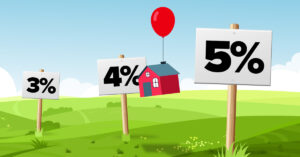Credit standards have slowly but steadily loosened to their lowest levels in years, with the accompanying default risk of mortgage lenders nearing its highest point since 2013.
According to the Urban Institute’s Housing Finance Policy Center, mortgage-credit availability increased to 5.85 percent in the fourth quarter of 2018. That’s up from 5.75 in the previous quarter and just off the post-2013 peak of 5.89, set in the first quarter of 2018.
The Urban Institute attributes the increase to greater risk taken in the portfolio and private-label securities channel, although credit availability grew in both the government and government-sponsored enterprise channels as well.
Notably, credit availability in the government loan channel expanded to 11.8 percent, its highest level since 2009. The government channel — which includes loans made by the Federal Housing Administration (FHA), U.S. Department of Veterans Affairs (VA) and the U.S. Department of Agriculture (USDA) — saw its risk tolerance bottom out in late 2013, but it has been increasingly more open to risk since then. In the past nine quarters, the channel’s total default risk has grown considerably, from 9.9 percent in fourth-quarter 2016 to the aforementioned 11.8 percent at the end of 2018.
Also of note is that, although 11.8 percent is a recent high, it remains about half of the typical default risk of 19 percent to 23 percent taken by the government channel prior to the last housing crisis.
Similarly, credit availability in the GSE channel — comprised of loans purchased by Fannie Mae and Freddie Mac — has been on a gradual climb since the housing crisis. The past fourth quarter saw a fractional increase, remaining essentially flat after credit availability reached 3 percent in third-quarter 2018. It was the first time the GSEs’ default-risk tolerance had reached 3 percent since 2008.
As for the portfolio and private-label channel, borrower risk jumped significantly in fourth-quarter 2018 due to an increase in high-leverage lending. The 3.1 percent default risk taken by the channel in the past fourth quarter was 3.1 percent, the highest level since 2012.
Despite recent high-water marks in the component indices, Urban Institute noted that “significant space” remains to safely expand the credit box. If default risk in fourth-quarter 2018 were doubled across all channels, the report said, it would still be “well within the pre-crisis standard of 12.5 percent from 2001 to 2003 for the whole mortgage market.”
The Housing Finance Policy Center tracks credit risk through its Housing Credit Availability Index (HCAI), which measures the percentage of owner-occupied home-purchase loans that are likely to default. Lower percentages in the HCAI signal that it’s more difficult to get a loan, since lenders are implementing tighter credit standards. A higher HCAI indicates that lenders are willing to take more risk, thus making it easier to be approved for a mortgage.




